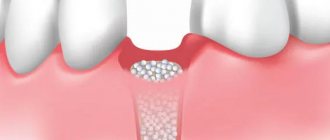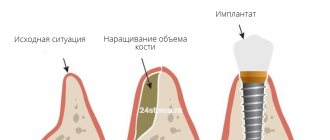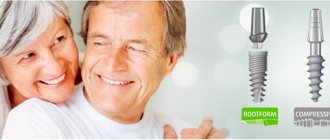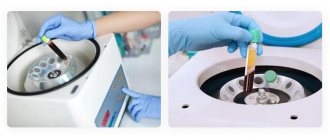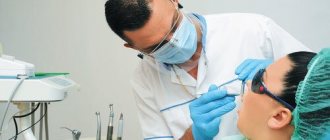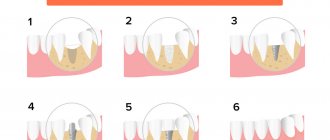NBR is one of the methods of bone augmentation before implantation. Surgery is used to guarantee the primary stability of the implant and eliminate the risk of rejection of the titanium root and the development of tissue inflammation. The lack of bone is filled with a bone substitute, which is secured with a membrane. They use their own or synthetic materials. The method is safe: surgery is performed under local anesthesia, small tissue incisions are made, bone material is grafted, and the process of graft engraftment is monitored.
What is Guided Bone Regeneration
Guided bone regeneration is an operation to compensate for the lack of bone tissue with a substitute, which is secured with a barrier membrane. After the procedure, a framework is formed around the transplant (it is formed by vessels and osteocyte cells that produce new tissue). Natural bone is gradually replacing artificial material.
Extensions using the NDT method are carried out according to classical parameters:
- thickness of the vestibular bone wall (at the cheek) - up to 2-2.5 mm;
- bone thickness between the implant and the root of the adjacent unit - up to 2.5-3 mm;
- The thickness of the bone wall between two titanium roots is up to 3 mm.
Indications
The operation allows you to increase the “necessary” volume for high-quality classical implantation, helps restore the functions of the jaw, and returns the gums to an attractive appearance.
The bone is built up “with reserve”, since after the operation the surface layers will be supplied with a small amount of oxygen due to their lower blood circulation. Therefore, the volume of inevitable tissue resorption is calculated.
In addition to implantation, indications for NRC are:
- rapid restoration of physiological parameters after tooth extraction;
- congenital or acquired defects of the bone around the teeth;
- prevention of tooth displacement, loosening, and loss due to periodontal tissue diseases.
Why does atrophy occur?
Contraindications for bone regeneration in dentistry
The main contraindications for the procedure include the following diseases:
- The presence of any inflammatory processes of the gums and tissues.
- The presence of pathologies in acute/chronic form.
- HIV.
- Various bone diseases, such as osteoporosis.
- Oncological diseases.
- Patient's pregnancy.
- Mental disorders.
- Various blood diseases.
What bone materials are used
Osteoplasty involves the use of bone replacement materials. Previously, transplants were used that were not widely used due to frequent rejection of foreign material:
- Allografts
are donated bone from other people. The material was obtained from corpses, processed, sterilized, and stored in bone tissue banks. - Xenografts
are animal bones (cattle, pigs). The material was freed from proteins by heating (to eliminate the possibility of an allergic reaction after transplantation).
We do not use outdated techniques. Nowadays, many synthetic components have been developed that promote the growth of our own bone, which we use to build bone tissue.
Synthetic materials have a high degree of affinity and compatibility with natural bone and are its analogues. These are granular formulations based on:
- calcium phosphates;
- chondroitin sulfate;
- bioglass.
The effectiveness and safety of artificial materials has been confirmed by numerous studies. They are easy to use, take root well, promote the regeneration of your own bone, and are hypoallergenic.
With osteoplasty, a combination of an artificial substitute and a person’s own bone in the form of chips (autograft) is possible. The technique helps preserve the volume of built-up bone tissue and speed up the rate of recovery. The same method helps if you have to grow a large amount of tissue.
If there is a slight shortage, you can only get by with synthetic materials.
Materials for bone tissue augmentation during implantation
In implantology, osteoplastic materials are used in the form of granules, bone blocks and porous membranes. There are osteoplastics of mineral (synthetic) and biogenic (animal) origin.
To build up the jawbone during implantation, the following types of bone material are used:
- Autogenous - a piece of bone extracted from the donor area of the patient himself. The bone placed in the defect area is called an autograft.
- Allogeneic – the bone donor is another person. Allografts are taken in the event of a person's death, undergo special processing and are stored in donor tissue banks. Despite the ethical issues, allografts have a significant advantage, saving the patient from surgery to harvest his own bone tissue.
- Xenogeneic – material of animal origin based on bovine or pork bone. Used in the form of granules and bone blocks.
- Alloplastic - granules of synthetic origin based on calcium phosphate.
A separate group of osteoplastics consists of collagen membrane plates of animal origin. The main purpose of the membranes is to isolate the bone defect from the soft tissue of the gums and actively stimulate the repair of the jaw bone.
Types of bone grafting for dental implantation
To restore lost bone volume and install an implant, 4 technologies are used.
Splitting of the alveolar process
Description of technology: (see the process in the photo below)
the alveolar process in the area of the dental defect is sawed along the ridge with a dental cutter (1). The resulting hole is expanded with drills of different diameters (2,3), after which root-shaped implants are screwed in (4). The remaining cavities on both sides of the rods are filled with a synthetic or natural osteoplastic filler, covered with a resorbable membrane (5), and the gingival flap is sutured.
3-6 months after tissue regeneration is completed, abutments and temporary dental crowns are installed on the implants.
In the photo: Bone tissue augmentation before implantation by cutting the alveolar process
Indications:
This bone grafting technology is used to restore several teeth with horizontal resorption of the alveolar process at least 2 mm thick.
Important:
the method allows for bone grafting to be performed simultaneously with dental implantation, promotes rapid regeneration of bone tissue, and does not require surgery to collect autogenous bone material.
Bone block transplantation
Description of technology:
the operation is carried out in two stages.
- At the first stage, donor bone is collected from the chin area, from the cusps of missing wisdom teeth in the upper jaw, and in rare cases, from the ilium.
- At the second stage, autogenous bone material is placed in the desired area of the jaw using titanium screws. After this, the regenerated area is covered with a two-layer resorbable membrane and hidden under a gum flap.
Indications:
restoration of one or more teeth with severe bone resorption in width or height.
Important:
using your own bone significantly increases the chances of successful regeneration of the implanted block. This type of bone grafting does not allow you to immediately proceed to implantation. The implant is installed only 6-12 months after the first operation.
Guided bone regeneration
Description of the technology:
(see the process in the photo below)
the gums are opened (1), after which the area is injected with a natural osteo-replacement material based on bovine bone (4). The area is covered with a two-layer collagen membrane (5) to guide bone regeneration and sutured (6). Instead of a resorbable membrane, a non-resorbable film on a titanium mesh frame can be used.
In the photo: Guided bone regeneration simultaneously with the installation of 2 implants
Indications:
used for minor and moderate atrophy of bone tissue in width and height.
Important:
augmentation can be carried out simultaneously with implant installation and does not require surgery to transplant a bone block.
Sinus lift
Description of technology:
During the operation, the dental surgeon lifts the bottom of the maxillary sinus and fills the resulting cavity with a synthetic bone filler. Depending on how the manipulations to correct the bottom of the maxillary sinus are carried out, a distinction is made between closed and open sinus lift.
Indications:
the upper jaw in the area of 5-7 chewing teeth with the close proximity of the maxillary sinuses.
Important:
In most cases, implantation in the upper jaw is carried out simultaneously with a sinus lift.
Read more about sinus lifting in a separate article.
Prices for bone tissue augmentation during dental implantation in Moscow
The cost of the operation is determined by the following factors:
- Degree of bone tissue atrophy;
- Selected augmentation technology;
- Materials used.
A little about the cost of consumables:
Let's give an example of how the cost of augmenting bone tissue for an implant will change depending on the type of materials used.
| NPK "VITAFORM-R" (Russia) | Price | Geistlich Pharma (Switzerland) | Price |
| Xenocollagen granules Osteoplast-K | 1000 rub. | Xenocollagen granules Bio-Oss Spongiosa | RUB 14,650 |
| Resorbable collagen membrane Osteoplast* 30x40 mm. | 3800 rub. | Resorbable collagen membrane* 30x40 mm. Bio-Gide | 26,300 rub. |
| Total: | 4800 rub. | Total: | RUB 40,950 |
| NPK "VITAFORM-R" (Russia) | Price |
| Xenocollagen granules Osteoplast-K | 1000 rub. |
| Resorbable collagen membrane Osteoplast* 30x40 mm. | 3800 rub. |
| Total: | 4,800 rub. |
| Geistlich Pharma (Switzerland) | Price |
| Xenocollagen granules Bio-Oss Spongiosa | RUB 14,650 |
| Resorbable collagen membrane* 30x40 mm. Bio-Gide | 26,300 rub. |
| Total: | RUB 40,950 |
* The membrane is used only in some cases.
We do not skimp on consumables, and to guarantee our clients the success of the operation, we use only experience-tested, expensive materials.
Cost of bone tissue augmentation for implantation at the NovaDent clinic
| Osteoplasty technology | Price |
| Bone grafting in the area of one tooth | 9,600 rub. |
| Collection of autogenous bone material | from 10,150 rub. |
| Collection and installation of a turnkey bone block | from 39,400 rub. |
| Cutting of the alveolar process (price without installation of implants) | from 39,400 rub. |
| Sinus lift | from 25,300 rub. |
| Guided bone regeneration | from 25,000 rub. |
| Osteoplasty technology | Price |
| Bone grafting in the area of one tooth | 9,600 rub. |
| Collection of autogenous bone material | from 10,150 rub. |
| Collection and installation of a turnkey bone block | from 39,400 rub. |
| Cutting of the alveolar process (price without installation of implants) | from 39,400 rub. |
| Sinus lift | from 25,300 rub. |
| Guided bone regeneration | from 25,000 rub. |
How to do without bone grafting
The NovaDent dental center offers clients several alternatives to bone grafting. To avoid complications and if there are appropriate indications, we can perform dental implantation without bone tissue augmentation in the following ways:
- install compression-type implants into deeper layers of bone;
- install long root-shaped implants at an angle to the plane of the tooth or bypassing the maxillary sinuses;
- carry out a full jaw implantation on four or six implants.
Learn more about alternatives to osteoplasty.
The choice of treatment method is determined by the attending physician based on the results of the initial consultation and examination of the patient.
Types of membranes
The membrane technique used by the surgeon is needed to isolate the space from fibrous tissue - creating conditions for normal tissue regeneration. There are several requirements for membranes:
- biological compatibility;
- strength;
- prevention of migration of epithelial cells;
- corresponding resorption period.
In practice, two types of membranes are used:
- Resorbable.
They dissolve on their own 6-24 weeks after extension. Membranes are used for small defects (when you need to build up no more than 2 mm) - they do not hold their shape as well as the next type. - Non-resorbable.
They do not dissolve - they are eliminated several months after surgery.
To quickly fuse the artificial material with the jaw bone tissue, in some cases membranes from the patient’s blood plasma are used.
Guided bone regeneration (GBR) surgery – vertical and horizontal bone augmentation
Bone atrophy is a fairly common pathology among dental patients. It occurs for various reasons. Over time, the bone can atrophy after tooth loss. This does not always happen, in about 60-70% of cases. Or a decrease in the volume of bone tissue and a change in its density occurs with the development of periodontitis. But in any case, this leads to serious problems.
A decrease in bone mass causes a weakening of the fixation of a healthy tooth, an increase in its mobility and can even lead to the loss of a unit. Also, an insufficient volume of healthy tissue becomes an obstacle to implantation. It is impossible to securely fix an implant in too thin jaw tissue.
Today, dentists have many methods in their arsenal that help cope with this problem. One of the most effective is the method of guided bone tissue regeneration or GBR.
What is this method
The essence of the method of directed bone tissue regeneration is the grafting of osteoplastic material to the patient’s living bone tissue. This surgical intervention allows you to grow the required area of the alveolar process. Conditions for cell growth are created using barrier membranes.
The membrane is
Thus, the use of membranes together with replanting materials makes it possible to stimulate bone tissue regeneration and partially or completely restore lost periodontal structures.
How the operation is performed
The procedure is performed under local anesthesia. To perform the operation of directed bone tissue regeneration, osteoplastic material and a barrier membrane are required. The membrane is necessary to quickly restore blood supply to the operated area, as well as to protect it.
There are 2 types of membranes: resorbable and non-resorbable. Resorbable ones are good because they dissolve on their own over time. But such structures cannot be used when restoring a large area. Non-resorbable membranes make it possible to form bone with the desired parameters. The disadvantage of the structures is the need for repeated surgery to remove them.
The NDT operation consists of the following stages:
- in the right place, a flap is cut out of the gum and folded back;
- the membrane is installed and fixed. Its installation is carried out in such a way that a space (pocket) is formed between it and living tissues;
- the pocket is filled with osteoplastic material;
- The flap is placed in its place and sutures are applied.
The sutures are removed on the 7-10th day. Depending on the volume of the defect, bone tissue regeneration occurs within 6-8 months. If the atrophy was not too great, in some cases implants are immediately installed during surgery. Which significantly reduces treatment time.
Where does bone graft come from?
All human bones contain an internal spongy substance filled with bone marrow. It contains stem cells, the main feature of which is the ability to differentiate into any cells of the body. However, not all bones are suitable for material collection when using the method of guided bone tissue regeneration.
Why? Because different bones perform different functions. And, in this regard, they differ in nutrition and metabolism. As a result, when transplanting a graft, for example, from the tibia, the transplanted material will not have the necessary conditions for further regeneration of bone tissue, which will lead to rapid resorption of the graft.
Therefore, when performing an NRC operation, material is taken from bones that are identical in structure and functions to the area into which they will be transplanted. To date, the best results have been shown by transplants of the chin, angle of the lower jaw and calvarium.
Which clinic should I go to?
The procedure for restoring bone tissue is quite complex and requires high skill and professionalism from specialists. Surgeons at the Paracels Clinic successfully cope with such tasks. In their work, they use high-quality drugs and modern equipment, which significantly increases the effectiveness of treatment.
Paracelsus Medical Center - we are known in Moscow, Krasnogorsk, Zvenigorod, Zelenograd, Dolgoprudny, Solnechnogorsk.
NDT stages
The operation is performed under anesthesia. The surgeon acts according to the classical algorithm:
- He cuts the gum along the hole of the lost tooth, makes several cuts on the side - peels off the gum flap.
- Fixes the implant into the exposed bone (if the operation is organized simultaneously with implantation).
- Replaces the missing volume with a graft, covers it with a membrane with a protrusion of 2-3 mm beyond the bone material. If it does not exclude the fact that the membrane is being pressed into the defect, a titanium mesh is placed on top.
- Secures the membrane (with sutures or screws).
- Brings the edges of the wound together and applies stitches.
The operation lasts 1-1.5 hours.
Can it be done simultaneously with implantation?
Two operations are combined into one if the following conditions are met:
- the shape of the defect allows you to correctly install the artificial root in any of the planes;
- when installed, the implant is located within the bone contour (does not go beyond the tangent drawn to the bone line);
- eliminate a horizontal (not vertical) defect.
The implanted implant can become a barrier to the growth of blood vessels and inhibit the formation of new bone. If the implant protrudes beyond the contour of the bone tissue, the risk of developing fibrous tissue with inclusions of the implanted material cannot be ruled out.
Resorbable membranes
The peculiarity of resorbable membrane inserts is their independent resorption after performing a functional task, eliminating the need for repeated surgical intervention. The products are freely placed on the selected area, but have a limited range of action, restoring surfaces with a volume of no more than two millimeters. The reduced structure of the bone tissue being formed, in turn, reduces the possibilities for installing implants.
Typically, resorbable membranes are installed to enclose the surgical site and form a biological barrier at the site of the tissue incision. Horizontal regeneration using such materials takes a lot of time and effort, so experts recommend using them only on the maxillary region. Vertical operation requires the presence of slotted holes, the width of which reaches three millimeters, however, in this case, the formation of a full-fledged structure is complicated by the presence of areas of other tissues.
Non-resorbable plates
Membrane inserts belonging to the non-resorbable category are considered the optimal tool for targeted regeneration. The advantage of membranes is the ability to form bone that meets the specified parameters and characteristics. Products are divided based on the presence of a titanium frame, thanks to which a clear boundary is created that prevents violation of the configuration. Non-resorbable plates are used to restore large areas of bone tissue, both in the horizontal and vertical planes.
Fixation technique
The protocol for installing a non-resorbable membrane involves performing the following sequential manipulations:
- Incision of mucous tissue and detachment of the flap part;
- Decortication of the surface of the bed for installation of a membrane with osteomaterial;
- Fastening the product using a screw connection;
- Sewing the surface tissue using thin threads;
- Antiseptic treatment of the intervention site.
The use of non-resorbable membranes allows you to achieve the desired result in the field of restoration of bone tissue of the jaw. Even with large lesions, large damaged areas can be restored using a titanium frame. The completed directed regeneration cycle allows
